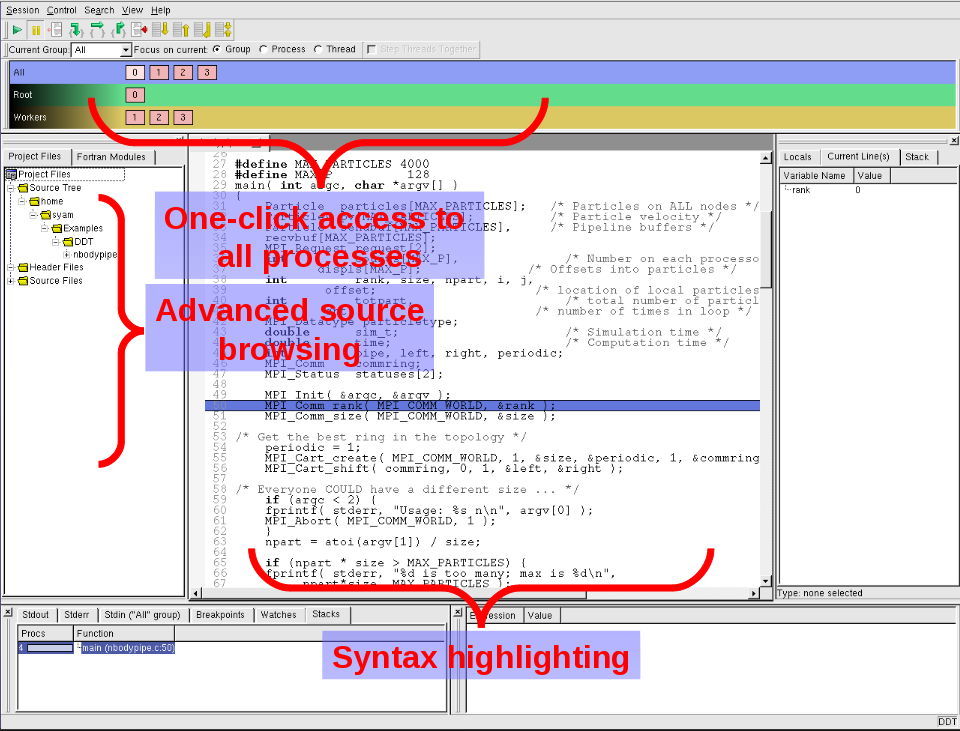Compiling And Running Cuda Programs
NVIDIA CUDA Getting Started Guide for Microsoft. Compiling CUDA Programs. NVIDIA CUDA Getting Started Guide for Microsoft Windows. I am strugling with parallelizing a RayTracing program, using CUDA. I have the sequential code, and I have wrote the parallel code (kernel). When running the program.
Compiling with -xhost on the Della head node (an ivybridge) will produce code optimized for the ivybridge processors. As a result, when run on the older westmere nodes, the executable will fail with an error message similar to: 'Please verify that both the operating system and the processor support Intel(R) F16C and AVX1 instructions.' When running on the newer haswell and broadwell nodes, the code will run below optimal performance. The recommended solution is to use the -ax flag to tell the compiler to build a binary with instruction sets for each architecture, and choose the best one at runtime. For example, instead of -xAVX or -xhost, use: -axCORE-AVX2,AVX,SSE4.2. Module load cudatoolkit nvcc myCUDAcode.cu Submitting an MPI Job Once the parallel processing executable, a.out, is compiled, a job script to run it will need to be created for Slurm. Here is a sample command script, parallel.cmd, which uses 16 CPUs (8 CPU cores per node).

In most cases, you should specify -ntasks-per-node to be equal to the number of cores per node on the system where the job will run. For Adroit, this is 8, for Tiger it is 16.
See the table for details for each cluster. If you need help with job submission parameters, send e-mail to cses@Princeton.edu or come to one of the twice-weekly.
To initialize the device arrays, we simply copy the data from x and y to the corresponding device arrays dx and dyusing cudaMemcpy, which works just like the standard C memcpy function, except that it takes a fourth argument which specifies the direction of the copy. In this case we use cudaMemcpyHostToDevice to specify that the first argument is a host pointer and the second argument is a device pointer. CudaMemcpy ( dx, x, N.
sizeof ( float ), cudaMemcpyHostToDevice ); cudaMemcpy ( dy, y, N. sizeof ( float ), cudaMemcpyHostToDevice ). The information between the triple chevrons is the execution configuration, which dictates how many device threads execute the kernel in parallel.
In CUDA there is a hierarchy of threads in software which mimics how thread processors are grouped on the GPU. In the CUDA programming model we speak of launching a kernel with a grid of thread blocks. The first argument in the execution configuration specifies the number of thread blocks in the grid, and the second specifies the number of threads in a thread block. In CUDA, we define kernels such as saxpy using the global declaration specifier. Variables defined within device code do not need to be specified as device variables because they are assumed to reside on the device. In this case the n, a and i variables will be stored by each thread in a register, and the pointers x and y must be pointers to the device memory address space. This is indeed true because we passed xd and yd to the kernel when we launched it from the host code.
The first two arguments, n and a, however, were not explicitly transferred to the device in host code. Nicolae guta am un baiat smecher mare. Because function arguments are passed by value by default in C/C, the CUDA runtime can automatically handle the transfer of these values to the device. This feature of the CUDA Runtime API makes launching kernels on the GPU very natural and easy—it is almost the same as calling a C function.
Compiling And Running Java Command Line
There are only two lines in our saxpy kernel. As mentioned earlier, the kernel is executed by multiple threads in parallel. If we want each thread to process an element of the resultant array, then we need a means of distinguishing and identifying each thread. CUDA defines the variables blockDim, blockIdx, and threadIdx. These predefined variables are of type dim3, analogous to the execution configuration parameters in host code. The predefined variable blockDim contains the dimensions of each thread block as specified in the second execution configuration parameter for the kernel launch.
Cuda Programs

The predefined variables threadIdx and blockIdx contain the index of the thread within its thread block and the thread block within the grid, respectively. The expression: int i = blockDim. X. blockIdx. X + threadIdx.
Compiling And Running Java Programs

Before this index is used to access array elements, its value is checked against the number of elements, n, to ensure there are no out-of-bounds memory accesses. This check is required for cases where the number of elements in an array is not evenly divisible by the thread block size, and as a result the number of threads launched by the kernel is larger than the array size. The second line of the kernel performs the element-wise work of the SAXPY, and other than the bounds check, it is identical to the inner loop of a host implementation of SAXPY.